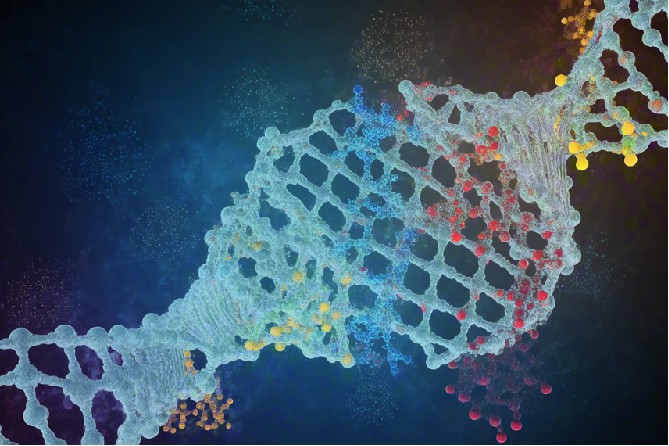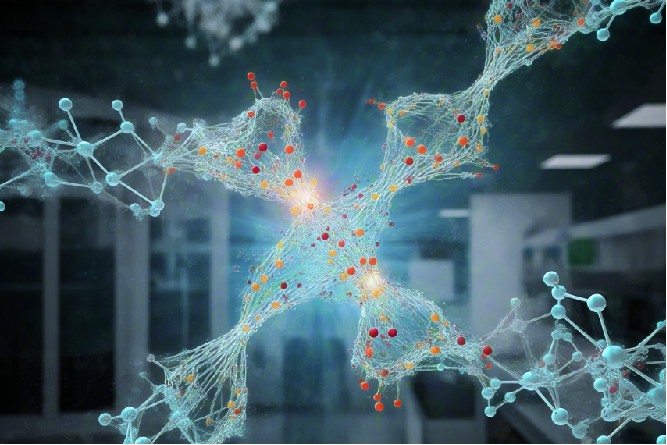Statistical Analysis of Glyco-protein Landscapes Around Glycosylation Site
Deciphering the Glyco-Protein Code with Statistical Analysis
Statistical analysis of the glycol-protein landscape surrounding protein glycosylation sites aims to uncover information and patterns related to protein glycosylation. CD BioGlyco provides professional statistical analysis of glycoprotein landscapes around glycosylation sites leveraging our extensive experience in
Glycosylation Site Statistical Analysis. The services we provide include but are not limited to the following:
Structural analysis for N-glycoprotein maturation
We analyze the frequency of loop regions with varying surface areas, including α-helix, β-folding, and structureless regions, by calculating the accessible surface area of the protein surface. The purpose of this analysis is to gain insight into the structural basis of N-glycoprotein processing and maturation. For instance, examining the secondary structure in loop regions with different surface areas allows us to determine whether there is a higher occurrence of unstructured loop regions in immature glycosylation datasets. Thus, the loop region that is more likely to interact with the glycosyl moiety is identified.
Amino acid frequency analysis service
We offer the amino acid frequency analysis service for you. The purpose of amino acid frequency analysis is to understand the frequency of occurrence of different amino acids in the glycoprotein structure around the N-glycosylation site. By analyzing the frequency of amino acids, the roles and effects of different amino acids in the N-glycosylation process and the maturation process can be revealed.
Classification of amino acid residues in glycoproteins
In addition, by categorizing amino acid residues into four groups (negatively charged, positively charged, hydrophobic, and hydrophilic), we determine which group of residues is relatively more common in immature glycoproteins for you.
Analyzing amino acid side chain structures for glycoprotein regulation
We also analyze the structural characteristics of amino acid side chains, assisting in the examination of the frequency of occurrence of short and long-side chain amino acids surrounding mature and immature glycoproteins. This aids in uncovering their regulatory role in protein surface interaction with sugar groups.

Publication
Technology: Zwitterionic hydrophilic interaction liquid chromatography (ZIC-HILIC)
Journal: Frontiers in Chemistry
IF: 3.8
Published: 2021
Results: In this publication, the authors used a complete O-glycopeptide analysis strategy to analyze the O-glycosylation sites of the SARS-CoV-2 recombinant S protein and the O-glycosylation landscape in its vicinity. The authors used ZIC-HILIC for complete glycopeptide enrichment and PNGase F to remove non-glycopeptide and N-glycopeptide interference. Finally, the authors analyzed the intact O-glycopeptides using a high-resolution mass spectrometer and characterized and manually validated the mass spectra using Byonic software. Therefore, it can be concluded that the O-glycosylation landscape obtained by the authors was based on the analysis of intact glycopeptides near the glycosylation site.
 Fig.1 Revealing the full scope of O-glycosylation on SARS-CoV-2 spike proteins through comprehensive profiling. (Zhang, et al., 2021)
Fig.1 Revealing the full scope of O-glycosylation on SARS-CoV-2 spike proteins through comprehensive profiling. (Zhang, et al., 2021)
Applications
- Analysis of protein landscapes around N-glycosylation sites is used in biomedical research to help unravel the biological functions of glycoproteins and the mechanisms of related diseases.
- Analysis of protein structures and glycoprotein interactions around glycosylation sites is used in drug discovery and provides important information for drug design and optimization.
- This technique is used in bioengineering to guide the engineering modification and optimization of glycoproteins to improve their bioactivity, stability, and pharmacokinetic properties.
Advantages
- We provide more comprehensive information by analyzing large-scale data provided by statistical analysis.
- CD BioGlyco provides accurate statistical data and analysis results to help you get fast and accurate information about glycosylation sites.
- We integrate multidisciplinary knowledge of statistics and biology to provide researchers with a multifaceted analytical perspective.
Frequently Asked Questions
- What are some noteworthy aspects of the latest research and technological advances in the field today?
- Some emerging technologies, such as single-cell sequencing and multi-omics single-cell analysis, have been gradually applied to the study of glycosylation sites, which are expected to provide a finer resolution for revealing intercellular and intracellular heterogeneity.
- What biological functions or potential interactions can this statistical analysis reveal?
- Statistical analysis of the glycoprotein landscape around glycosylation sites can reveal the following biological functions or potential interactions, such as glycoprotein interactions, signal transduction, and cell adhesion and migration.
With extensive experimental experience, CD BioGlyco provides tailored protocols to meet your specific requirements for statistical analysis of glycoprotein landscapes around glycosylation sites. Please feel free to contact us to discuss your specific needs.
Reference
- Zhang, Y.; et al. O-glycosylation landscapes of SARS-CoV-2 spike proteins. Frontiers in chemistry. 2021, 9: 689521.
For research use only. Not intended for any diagnostic use.
Quick Links
Related Services



 Fig.1 Revealing the full scope of O-glycosylation on SARS-CoV-2 spike proteins through comprehensive profiling. (Zhang, et al., 2021)
Fig.1 Revealing the full scope of O-glycosylation on SARS-CoV-2 spike proteins through comprehensive profiling. (Zhang, et al., 2021)


